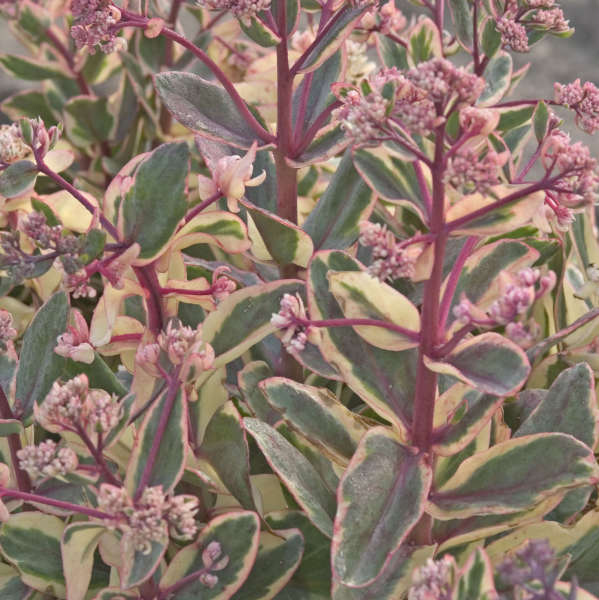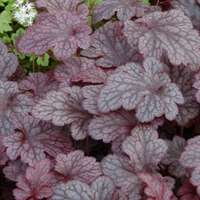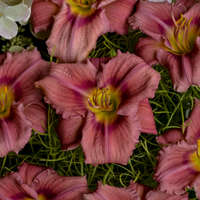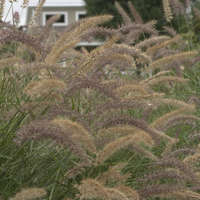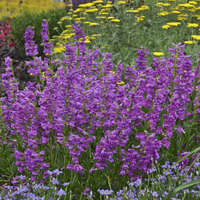Sedum 'Samuel Oliphant' PP15582
Common Name: Autumn Stonecrop
You've never seen anything like this plant before! 'Samuel Oliphant' PP15582 is a fun collage of color, different from all other variegated sedums. The foliage is randomly variegated in lively shades of green, cream, and pink or burgundy. This extensive coloration tends to vary slightly under different growing conditions, especially with the amount of available sunlight. It is thought that higher light intensities enhance the pink and purple tones. Bright purple or burgundy stems carry 5" wide clusters of carmine and cream buds which open to light pink flowers in late summer.
'Samuel Oliphant' PP15582 is a "non-induced sport" of Sedum 'Matrona', discovered by John Casertano of N. Casertano's Greenhouses and Farms, Inc.
